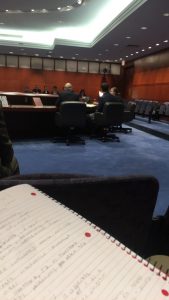Waiting for Superman opens with Geoffrey Canada telling a story from his childhood- the moment he found out that Superman wasn’t real. He wasn’t sad like he would be finding out that Santa Claus was fictional but rather he was sad because he realized that there was no one to swoop in and save the day. The video later flashes to an inner city neighborhood, showing a broken swing set and row houses. The narrator is heard saying one of the most important lines of the documentary, “For generations experts tend to blame failing schools on failing neighborhoods. But reformers have begun to believe the opposite- that the problems of failing neighborhoods might be blamed on failing schools” (Guggenheim 23:51).

Schools across the United States are failing students, not just in inner cities. The majority of eighth graders fall between 20 and 35 percent proficient in reading, with the nations capital at just 12 percent. The goal at the end of George W. Bush’s presidency was 100 percent proficient. People look at inner cities and blame the individuals who live there for the failed education and do not look at larger institutions. “Waiting for Superman” looked at Pennsylvania where 68% of inmates incarcerated are high school dropouts. With the amount of money it takes to keep one inmate incarcerated, the state could pay for a student’s private education. Is the education system failing the neighborhood? This comparison says yes.
We ignore the fact that the public education is failing all across the country, not just in inner cities. Suburban schools have glistening new sports fields so it is assumed the schools are better. In comparison to the rest of the world, though, the United States is starkly lower than most other industrialized countries in both math and reading.
Waiting for Superman explains not to just throw in the towel, that there is hope for public education. Money, laws, and reform have failed. Kids know and believe that education is a way out. But waiting in a chance in a charter school lottery continues to fail those who are not selected. Guggenheim and others who participated in the documentary believe it starts with the teachers and ends with everyone else who is dedicated to making schools better for their own child and other’s children.
Source: Guggenheim, Davis. Waiting for “Superman.” 2010. Film.

